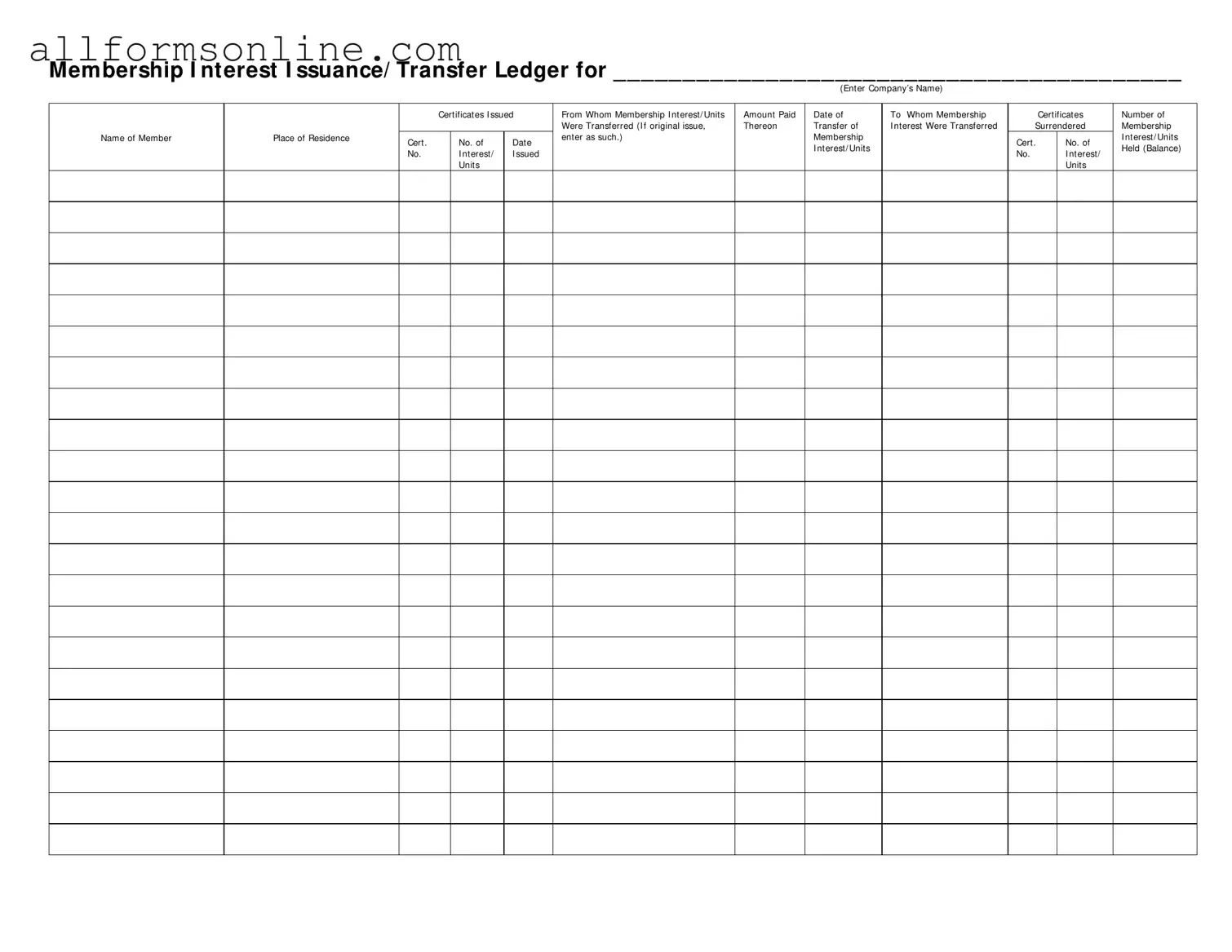What is the purpose of the Membership Ledger form?
The Membership Ledger form is designed to track the issuance and transfer of membership interests or units within a company. It serves as an official record that documents who holds membership interests, how many units have been issued, and any transfers that occur. This ensures transparency and accuracy in the ownership structure of the company.
What information do I need to fill out the form?
You will need to provide specific details such as the company’s name, the names of members involved in the transactions, the amounts paid for the membership interests, and the dates of issuance or transfer. Additionally, you should include the certificate numbers associated with the membership interests to maintain a clear record.
How do I record a transfer of membership interests?
To record a transfer, you will fill in the section designated for transfers on the form. Enter the name of the member transferring the interest, the name of the new member receiving it, the amount of interest being transferred, and the relevant certificate numbers. Ensure that the date of transfer is accurately noted to reflect the transaction timeline.
What should I do if I lose a membership certificate?
If a membership certificate is lost, it is essential to report the loss to the company promptly. You may need to fill out a form for a replacement certificate, which often requires providing proof of your ownership and possibly a notarized statement. The Membership Ledger should then be updated to reflect the issuance of the new certificate.
Can I use this form for different types of membership interests?
Yes, the Membership Ledger form can be used for various types of membership interests or units, as long as the structure is defined within the company’s governing documents. Ensure that the form is adapted to reflect the specific types of interests being recorded, if necessary.
How often should the Membership Ledger be updated?
The Membership Ledger should be updated promptly after any issuance or transfer of membership interests. This ensures that the record remains current and accurately reflects the ownership structure of the company. Regular reviews of the ledger can help maintain its accuracy.
Is there a specific format for entering information on the form?
Yes, it is important to follow the format outlined on the Membership Ledger form. Each section should be filled out clearly and legibly. Use the specified fields for names, amounts, and dates, and ensure that certificate numbers are entered correctly to avoid confusion.
Who is responsible for maintaining the Membership Ledger?
The responsibility for maintaining the Membership Ledger typically falls on the company’s management or designated officers. However, all members should be aware of the ledger and its contents, as it directly impacts their ownership rights and responsibilities within the company.
